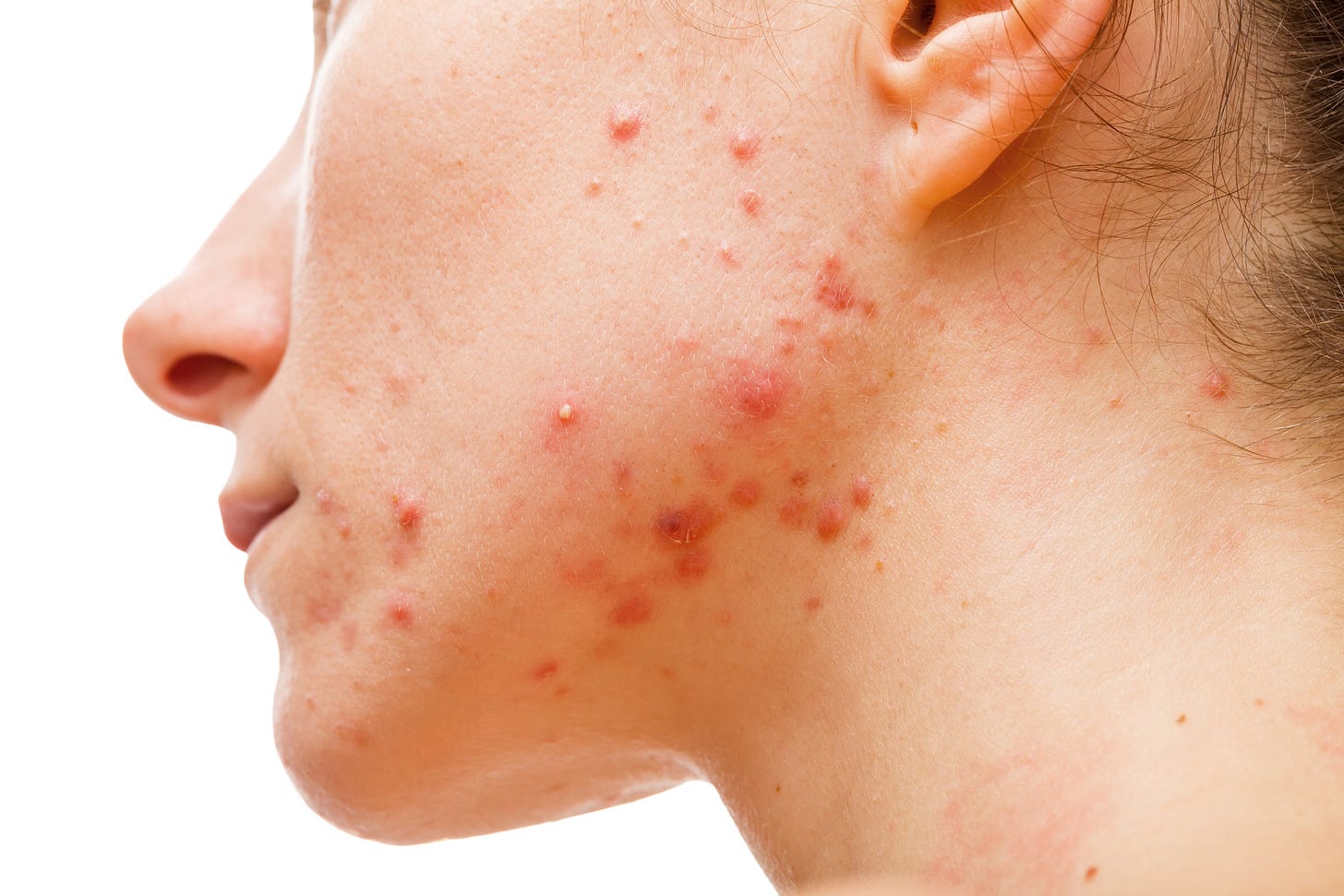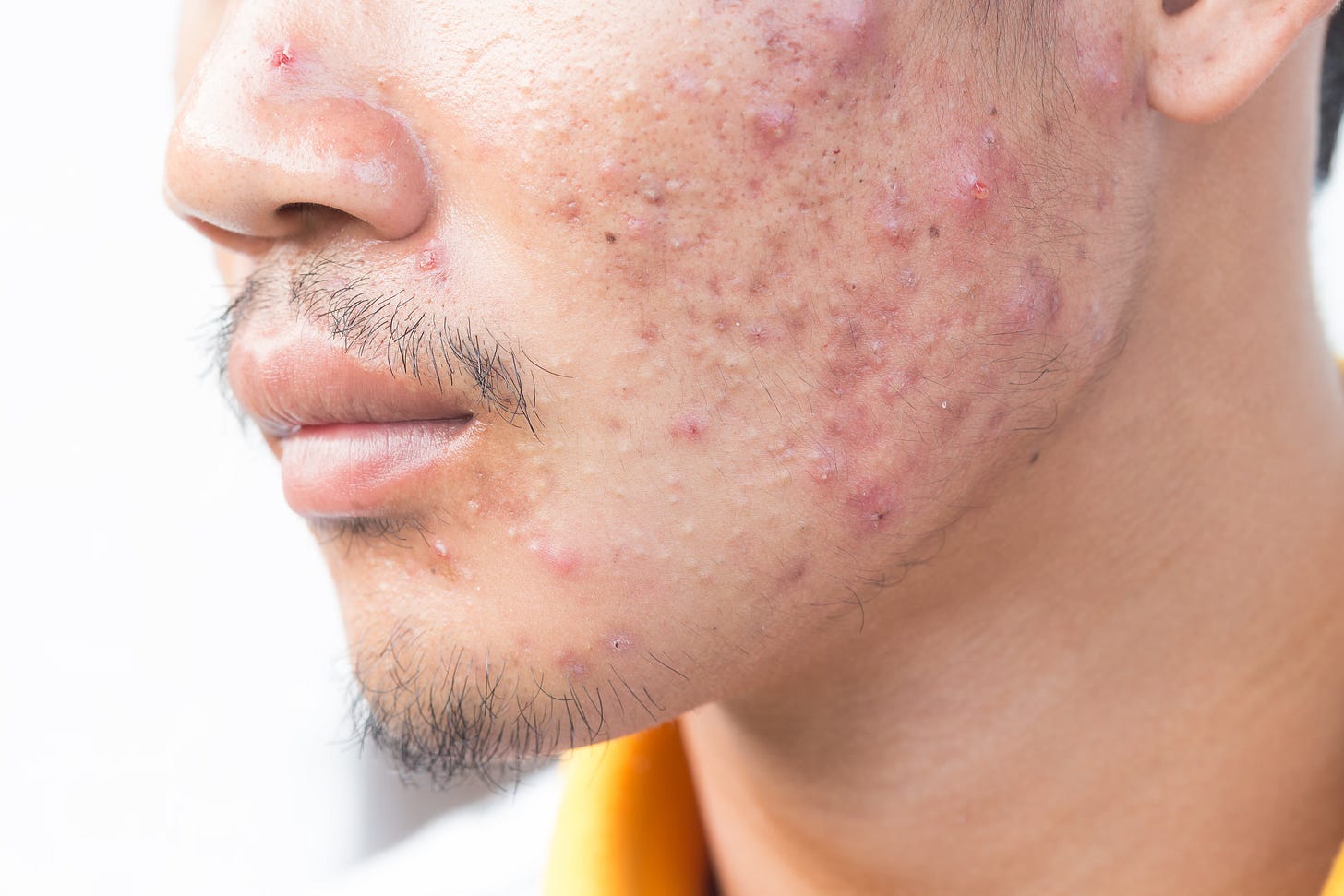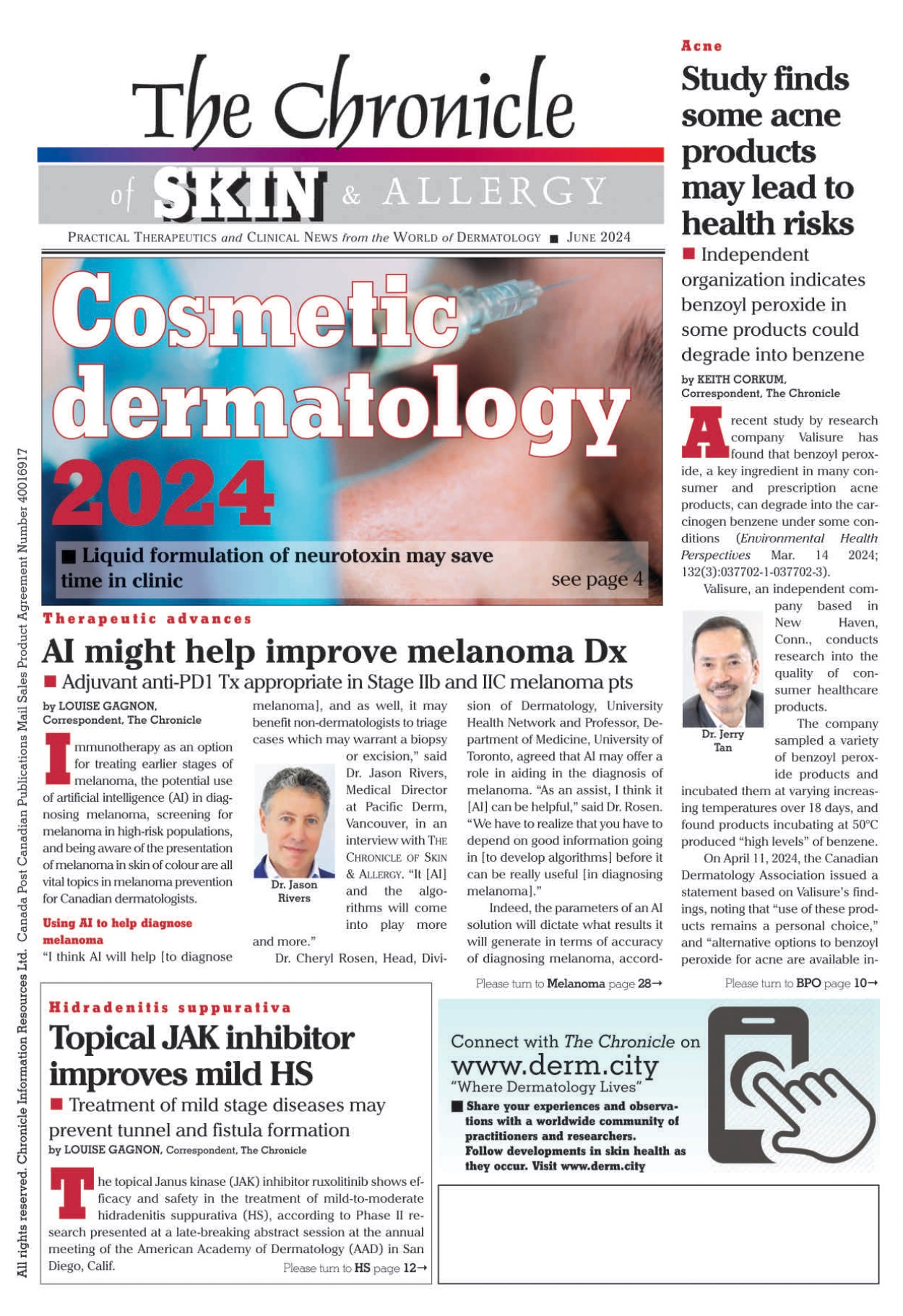Demographic and clinical factors impacting quality of life in acne clarified
Today's report also covers acne prescribing patterns, topical retinoids, isotretinoin, and more (1,650 words, 7 minutes, 45 seconds)
The Focus on Acne e-newsletter is supported by an unrestricted grant from Sun Pharma Canada
Good morning, and welcome to the 15th issue of Focus on Acne, presented by Skin Spectrum Weekly. This series provides up-to-date information on developing therapies and trends in acne treatment. We appreciate your feedback and suggestions and invite you to be in touch. Please write to us at health@chronicle.org
Demographic and clinical factors impacting quality of life in acne clarified
A study evaluating the extent to which acne interferes with quality of life (QoL) in young adults using Dermatology Life Quality Index (DLQI) scores and its associations with demographic and clinical factors found the condition has a marked impact, especially in patients with severe, persistent, and extensive cases.
The study was published in Cureus (Jan. 8, 2025; 17(1):e77167).
Researchers collected data between Oct. 2023 and Dec. 2023 at the Gayatri Vidya Parishad Institute of Health Care and Medical Technology in Visakhapatnam, India. The study population comprised 200 participants aged 16 to 28 years, with a mean age of 19.6 years. Some 68.5% of participants were women, and all were diagnosed with acne. They collected data on demographic factors (age, sex), clinical features (acne grade, duration, site, scars, hyperpigmentation, and skin type), and DLQI scores. Researchers classified acne severity from grade I to IV and analyzed the relationships between DLQI scores and clinical/demographic variables.
The findings showed acne grade II was the most common, and the average DLQI score was 11.14, indicating a noticeable impact on QoL. Nearly one-half of the participants (48%) reported a “very large” effect on QoL. Investigators found highly significant associations between acne duration, post-acne hyperpigmentation, and acne grade with DLQI scores (all p<0.001). They note this shows longer duration, hyperpigmentation, and higher acne grades significantly worsened QoL.
They also observed significant associations between the site of acne and acne scars (both p<0.05), with multiple acne sites and severe scarring linked to greater negative impacts on DLQI scores. Grade III to IV acne was especially tied to bigger hits on QoL. Additionally, the site of acne and acnescars were highly associated with acne grade (p<0.001). Factors such as having acne for over two years, oily skin, acne across multiple sites (face, chest, and back), and post-acne hyperpigmentation contributed to higher DLQI scores.
In their conclusion, the authors recommend further multi-center studies with larger samples to generalize these findings and help create targeted interventions.
Race, ethnicity, hospital system impact acneprescribing patterns
Researchers have identified differences in acne prescribing patterns by race, ethnicity, and hospital system in Los Angeles—differences which can impact the ability of patients to have successful treatment of their acne and its sequelae.
The study, published in Archives of Dermatological Research (Feb. 15, 2025; 317(1):424), investigated acne prescription patterns among patients seen in the private system (PS) and safety-net health care system (SNS) of the University of Southern California (USC) over a one-year period.
Researchers found, despite similar acne severity, SNS patients were less often prescribed azelaic acid, benzoyl peroxide/clindamycin, benzoyl peroxide/adapalene, sulfacetamide, topical dapsone, and salicylic acid than PS patients (p<0.001). SNS patients received fewer prescriptions for oral medications, including spironolactone, antibiotics, and isotretinoin (p<0.001). Despite similar acne severity, non-White patients were less frequently prescribed topical retinoids (p=0.003), benzoyl peroxide/clindamycin (p=0.003), isotretinoin (p<0.001) and spironolactone (p<0.001) than White patients. Despite higher acne severity among Hispanics/Latinos, they were less often prescribed spironolactone and oral antibiotics than their non-Hispanic/Latino counterparts (p=0.023).

New recommendations for topical retinoid Tx in acne
In a commentary article reviewing the use of topical retinoids for acnetreatment, the authors recommend that topical retinoids should be introduced as first-line therapy for the treatment of acne and acne sequelae. They write retinoids should be implemented into a treatment routine as early as possible, especially for patients with darker Fitzpatrick phototypes or patients at risk of atrophic acne scarring. It is also recommended that retinoids be incorporated within a comprehensive skincare regimen that includes adequate photoprotection when treating patients with darker Fitzpatrick phototypes. Management of acne and acne sequelae should include maintenance therapy with topical retinoids.
The commentary (Dermatology and Therapy (Heidelb), published online ahead of print Feb. 21, 2025), reviews the use of topical retinoids, with a particular emphasis on trifarotene cream 0.005%, for managing both acneand acne sequelae.
The authors note that Topical retinoids are central to improving treatment outcomes because of their established efficacy, safety and tolerability. In several studies, adapalene, tretinoin and tazarotene have demonstrated efficacy in reducing acne and acne sequelae. Trifarotene has been extensively studied in Phase 3 trials, demonstrating notable success in treating mild-to-moderate acne.
The authors cite two recent large-scale, randomized, blinded, Phase 4 clinical trials investigating trifarotene cream 0.005% in patients with atrophic acnescarring and acne-induced hyperpigmentation across all Fitzpatrick phototypes. They write the START study found that there was a greater reduction in total atrophic acne scar count in the trifarotene group compared with the vehicle group at Week 24 (55.2% vs 29.9%), with statistical significance established as early as Week 2 (p=0.001).
In their conclusion, the researchers say their review findings support the American Academy of Dermatology's call for acne sequelae treatment guidance and emphasize the need for continued research to optimize patient care.

Isotretinoin Tx for acne reduces sleep quality
In a new study (Archives of Dermatological Research (Feb. 14, 2025; 317(1):416), researchers observed a negative effect of isotretinoin on sleep quality in acne treatment.
Investigators included 50 patients with acne vulgaris who received isotretinoin treatment and were referred to a single dermatology polyclinic. Researchers administered two Pittsburgh Sleep Quality Index (PSQI) questionnaires, consisting of seven components and 19 items, to the patients, one during and one before the treatment period.
PSQI scores ranged from 0 to 21, with five and above indicating poor sleep quality. Before isotretinoin treatment, the average PSQI score of male patients was 11.5±4.95, while after treatment, it was 18.0±6.69. In female patients, the average PSQI score before treatment was 9.50±4.81, During treatment, it was observed as 14.0±6.28. An increase in scores was observed in both sexes after isotretinoin. The change before and after treatment was considered significant (p<0.001).
The authors note some experimental studies have shown that retinoic acids can affect the pathways in the brain that regulate sleep, but further research is needed in this area.

Subscribe to The Chronicle of Skin & Allergy
Established in 1995, The Chronicle of Skin & Allergy is a scientific newspaper providing news and information on practical therapeutics and clinical progress in dermatologic medicine.
To apply for a complimentary* subscription, please email health@chronicle.org with your contact information or click the link below.
If you find the contents of this newsletter interesting, please check out the Yadav on Acne podcast. It’s available at Apple iTunes, Stitcher, Spotify, or wherever you get your podcasts.







